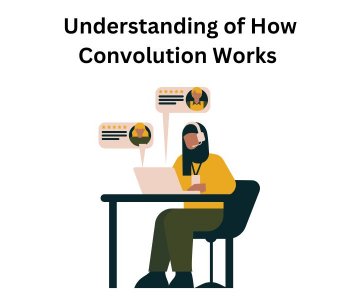Learn How PPC Strategies Can Increase Brand Visibility


Learn How PPC Strategies Can Increase Brand Visibility
Introduction to PPC Advertising
PPC advertising, also known as pay-per-click, is an effective way for businesses to get their message out to their target audience. As the name implies, PPC campaigns charge advertisers based on how many people click on the ads. This type of digital marketing has become increasingly popular for B2B companies, helping them cultivate relationships with customers and build brand recognition. Here’s a comprehensive look at how B2B companies can utilize PPC advertising for success. Check out : Full Stack Development Course Manchester
The Benefits of PPC for B2B Companies
PPC offers several advantages to B2B companies that make it appealing over traditional marketing tactics. One benefit of PPC is that you can target a specific demographic or group based on characteristics such as location, interests, language, and more. Additionally, you can create relevant ad messaging that speaks directly to your intended audience’s needs. Finally, results come quickly with PPC; you don’t have to wait weeks or months to begin seeing results from campaigns like you would with SEO or content marketing efforts.
Cost/Budgeting Considerations
PPC campaigns require budgeting consideration in order to be successful. Before launching your campaigns, decide what your budget is going to be and determine a cost-per-click (CPC) rate for each ad platform you choose to use. You should also take into account any additional costs (like design costs) associated with creating ads. Once you set your budget and CPC rate, it’s important not to go over them in order to keep campaigns profitable and sustainable.
Identifying Your Target Audience
When using PPC advertising for B2B marketing, it’s important for companies to identify their target audiences before launching a campaign. Knowing who your target audience consists of and what will appeal to them will ensure maximum return on investment (ROI). Here are some tips to help identify and refine your target audience.
Understand Target Audience:
The first step is to understand the basic characteristics of your intended audience. Who are they? What are they looking for? What tone resonates with them? Getting a clear picture of these essential qualities will be essential when crafting content that people want to read and click on.
Identifying Buyer Characteristics:
Once you have an idea of who you’re targeting, the next step is to identify buyer characteristics such as age, gender, education level, occupation, location, hobbies or interests, and so forth. This information can be gathered through online surveys or focus groups that ask participants questions about what they’re looking for in a product or service like yours.
Research and Segment:
As you get a better understanding of the types of customers you want to reach via PPC ads, research other companies within your industry or those offering similar products or services that have successful campaigns targeting similar audiences. Examine their strategies and think about how you could adapt them for your own campaign while still keeping it unique and appealing to your own customer base. Additionally, segmenting groups within the same audience can help maximize ad relevance and performance by targeting more specific segments with more customized messaging.
Selecting the Right Platforms for Your Ads
When it comes to utilizing PPC (Pay Per Click) advertising, selecting the right platforms is a crucial step for B2B companies. Knowing your audience, budget, and goals, and researching available platforms are all important considerations when choosing the right platforms.
By having an accurate understanding of your audience, you can determine which platform is best suited for targeting them. After that, you need to decide on a reasonable budget for your campaigns. Once the budget has been established then you can move on to researching the available platforms and seeing how they align with your goals. Check out : Investment Banking Course Manchester
As with any marketing campaign, having a well-thought-out strategy is essential. Without one, you won’t be able to get the most out of your PPC advertising efforts. This should include targeted keywords that are related to products or services that B2B companies offer as well as creating content specific to those keywords and topics. You may also want to consider using strategies such as remarketing to ensure that potential customers see ads over and over again in order to increase brand awareness among them.
It’s important to continue measuring performance results and optimizing them where necessary in order to get maximum efficiency from your campaigns. Keeping track of metrics such as clicks, conversions, and impressions will help you identify areas where adjustments need to be made in order to improve performance.
Ultimately, content marketing should always play a role in B2B companies’ PPC advertising campaigns as it allows potential customers to learn more about their products or services and why they should buy from them instead of competitors.
Crafting Compelling Ad Copy
Creating effective marketing for B2B companies can be challenging. Utilizing pay-per-click (PPC) advertising can be an effective way to reach potential customers and drive conversions. Crafting compelling ad copy is key in this process, as it can help ensure that the right message is communicated to the right audience.
The process of crafting compelling ad copy starts with keyword research. By researching relevant keywords related to your business and understanding current trends, you’ll be able to create content that resonates with your target audience. It’s also important to consider audience targeting when creating ad copy. The language used in ads should be both strategic and compelling while speaking directly to the customer’s needs or desires.
In addition, using a unique and conversational style can make your ad copy stand out among competitors. This helps ensure that your message is seen by the right people and gets them excited about what you have to offer. Once ads are launched, analytics measurement should take place in order to determine how effective they are in terms of reach, conversions, etc., and adjust accordingly if needed.
By utilizing PPC advertising strategically and crafting thoughtful ad copy, B2B companies can effectively engage potential customers through online platforms. With careful research, targeting, language use, and analytics measurement, B2B companies can create ads that drive results and increase conversions.
Optimizing for Quality Leads and Conversions
Properly optimized PPC campaigns can produce leads quickly, target a specific audience, and be very cost-effective. Here are some tips on how your business can utilize the PPC strategy to increase leads and convert them into sales:
Define Your Target Audience:
The key to success with any PPC campaign is having a clear understanding of who you’re targeting and what they’re looking for. Utilize keyword research tools to uncover the words and phrases your audience is using to search online and create targeted ads around those terms.
Budget Planning:
Once you know who you’re targeting, you need to figure out how much money you’re willing to spend each month on the campaign. There are various bid strategies available from Google Ads that will help you optimize your spending based on your budget and goals.
A/B Testing:
A/B testing helps understand which elements of a page or ad copy are providing the best results for conversions. Experiment with different landing page designs, headlines, call-to-action buttons, etc. until you find the most successful combination that gets people clicking through to your site.
Content Optimization:
Once users have clicked on an ad, they should be taken directly to a dedicated landing page with content targeted specifically towards their interests or needs as identified by their search query or other data sources such as demographic information or location data gathered through cookies or IP addresses.
Tracking and Analyzing Performance
By measuring and tracking data, assessing ROI, utilizing analytics tools, leveraging insights, automating bid management, testing different messaging and creative strategies, and employing A/B testing practices, companies can ensure they’re getting the best results from their PPC efforts. Check out : Data Science Course Manchester
Measuring and tracking data is essential to understanding how well your campaign is performing. This involves understanding the clickthrough rate of your ads on each platform you’re running them on (Google Ads, Facebook Ads, etc.), as well as where your campaigns are delivering the most conversions. With this data in hand, you can adjust your strategy accordingly to make sure you’re focusing your efforts on the right channels.
Analyzing the effectiveness of campaigns involves using reporting tools such as Google Analytics or other third-party programs to measure key performance indicators like cost per click (CPC) and cost per acquisition (CPA). This enables you to accurately assess whether or not your campaigns are meeting their objectives and providing an acceptable return on investment (ROI). The better you understand how effectively your campaigns are performing, the more efficiently you can allocate resources for optimal performance.


Ingen kommentarer endnu